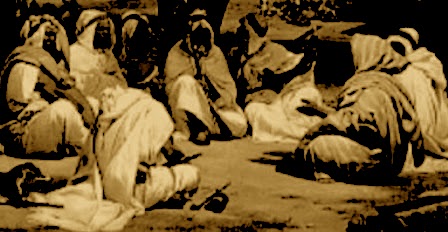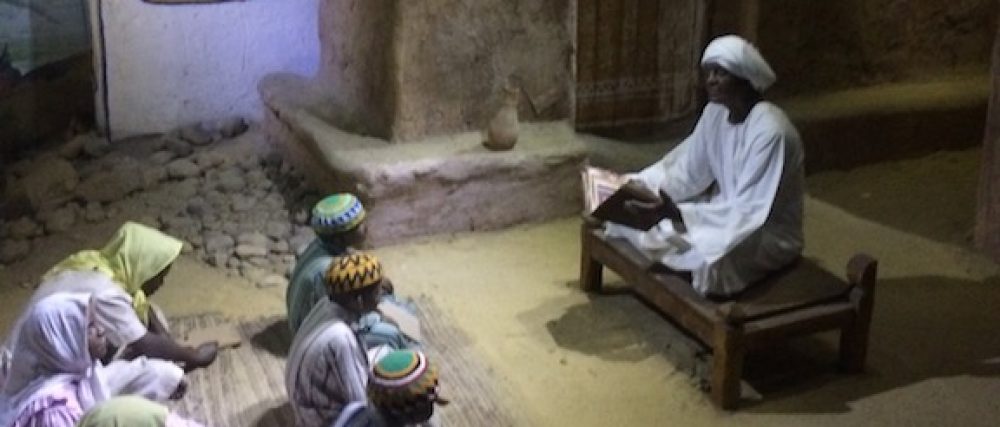I had to take a brief hiatus from writing the Islam and Ancient Mystery Schools series in absence of some information and in light of new information. In this post, I want to share some of my findings on the practices and identity of the Hanifs.
Since I published Islam and Ancient Mystery Schools (Part 3), I hoped to find a comprehensive work specifically about the Hanifs, but I have not located such a work in English or Arabic as of yet. Perhaps the paucity of sources about the Hanifs is due to the fact that they were not written about in depth in early sources. However, there are some tertiary sources and secondary sources that touch on the topic tangentially.
The most extensive of which was W. Montgomery Watt’s treatment of Ibn Ishaq’s Sira (in English) and al-Mafassal fi Tarikh al-‘Arab Qabl al-Islam by Jawwad Ali (in Arabic). While the general consensus is that the Hanifs are a mysterious group, if they can be called that, I will summarize a few points of interest for this study.

- There is a consensus that the Hanifs were monotheistic Arabs. No particular tribe or region had a particularly high number of hanifs in their midst. Ali compares them to reformists of our day (Ali vol. 6, 457). They observed their society and religious landscape and hoped for something better. They found solace in reclaiming the religion of Abraham.
- In terms of their practices, they were known to make hajj and practice circumcision. They also avoided the worship of celestial bodies and idols and refused to eat meat sacrificed to pagan gods. There were those among the Hanifs who would meditate on the Universe, practice spiritual seclusion by living in caves, and abstain from alcohol and foul language. They, however, had no shari’ah i.e. systemized worship, beliefs, or scripture (Ali vol. 6, 456 and 455).
- From what is known about them, they were not a monolith. Most classical Muslim scholars considered them to be monotheists who did not follow any of the known religions of the time. Others have named among the Hanifs Arab converts to Christianity such as Waraqa ibn Nawfal. Qays ibn Sa’ida al-Ayadi, and ‘Uthman ibn al-Huwayrith. Similarly, not all Hanifs converted to Islam upon learning about it like Abu Amir the Monk and Kinana ibn ‘Abd Yalayl al-Thaqafi (Ali vol. 6, 457-461).
- Orientalist scholars have found that some Syrian Christian groups used to refer to monotheistic Arabs as Hanifs, especially those from Yemen. They were said to have been influenced by the surrounding Jews and Christians. They were also knowledgeable of other languages such as Syriac and Hebrew. Ali states unequivocally that all Hanifs were often well-to-do and able to read and write. They spent their surplus income purchasing books, which were expensive in those times. He also speculated that they might have been familiar with Greek books of philosophy in addition to religious scriptures (Ali vol. 6, 453 and 456).
Conclusion
Is it possible that the Hanifs were the inheritors of the defunct Ancient Mystery Schools? According to George G.M. James, the Roman emperor Justinian had closed the Mystery Schools in Egypt as well as the teaching of Greek philosophy in the 6th century (p. 31). Thus the only religions tolerated were Trinitarian Christianity and Judaism to a lesser extent. All other doctrines, whether monotheistic or not were outlawed. Therefore it is possible that non-Jewish and non-Christian monotheists from the Mystery Schools roamed the peripheries of the Roman Empire in search of a purer and more ancient religion. It is also possible that they were subsumed into non-Hellenized interpretations of Christianity to which some Hanifs converted.
As we know, the Mystery Schools was highly structured and primarily oral. It would have been difficult to maintain the teachings of the full curriculum across lands, languages, and potential harm, so only visages of their beliefs and practices would survive. Still the fact that they were literate in other languages and spent their time and money educating themselves using the available written material of the time is a sign that they were seeking to reclaim knowledge that was lost.
While the true nature of the Hanifs may never be known, we can safely assume that they were influenced by the religious milieu of their time. The abolition of the Mystery Schools in the 6th century left a spiritual void on the Earth that would not be fulfilled until the spread of Islam in the coming centuries. As soon as Justinian attempted to extinguish the light of the Mystery Schools, a new light was sparked in the Arabian desert among the Hanifs…

